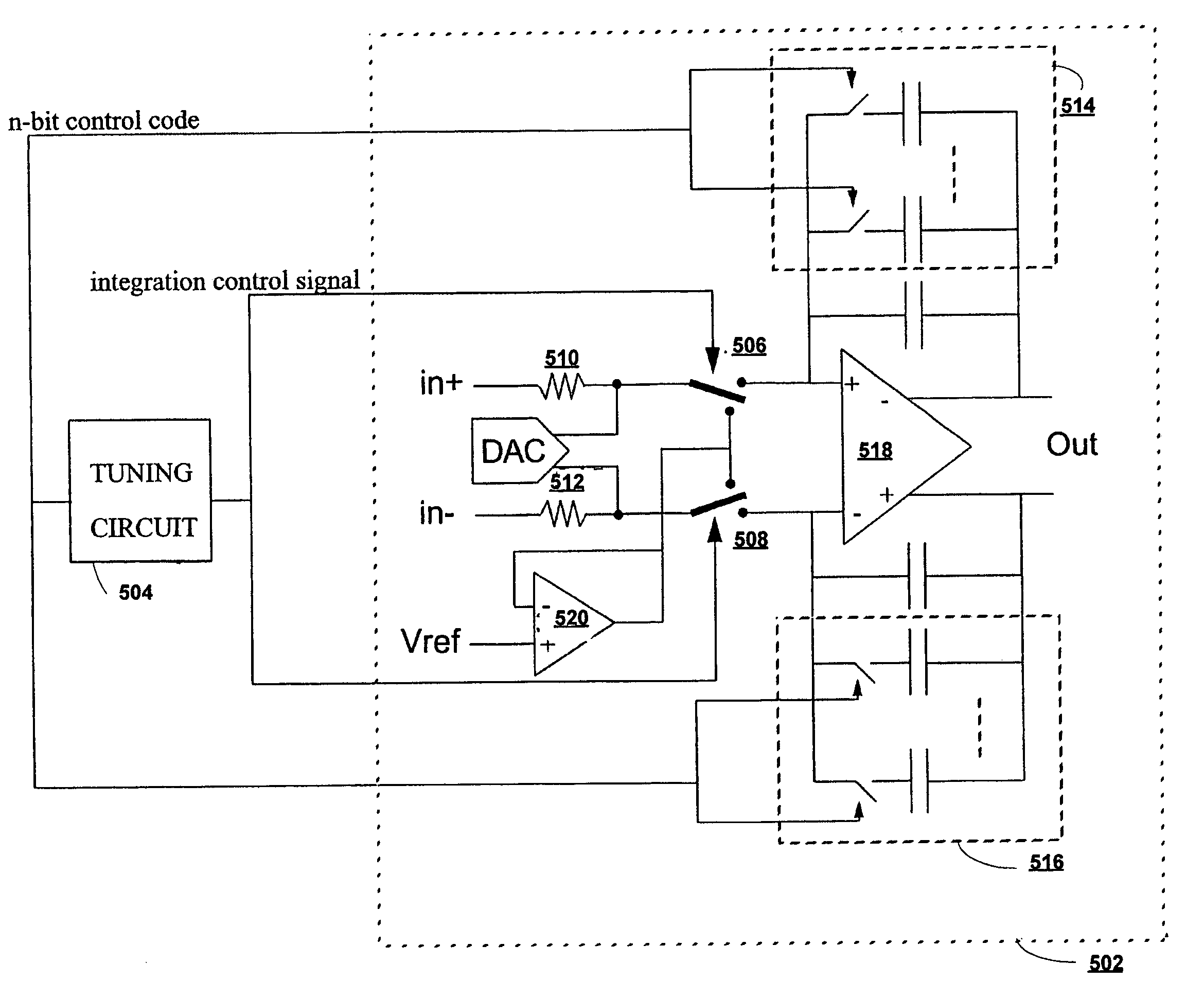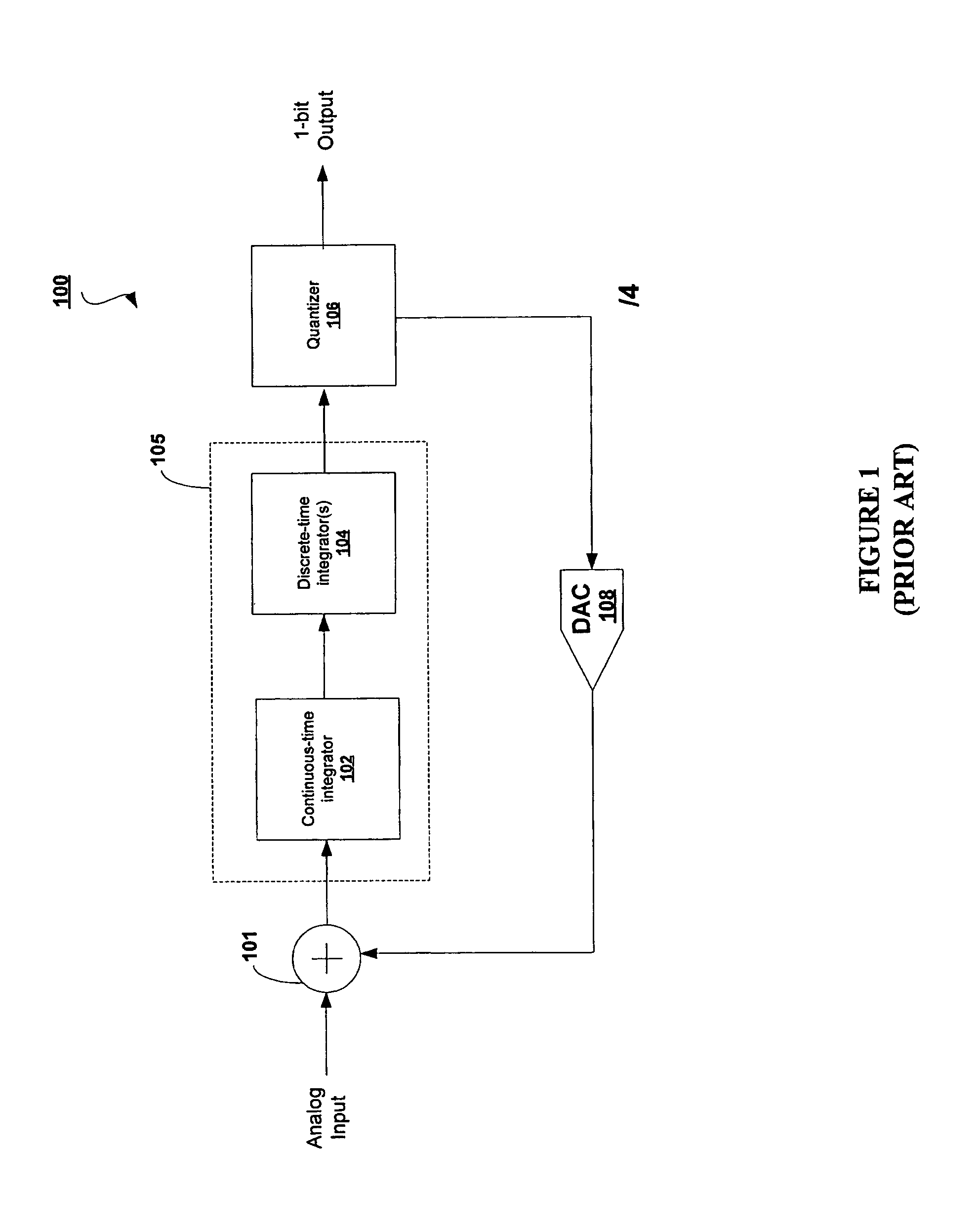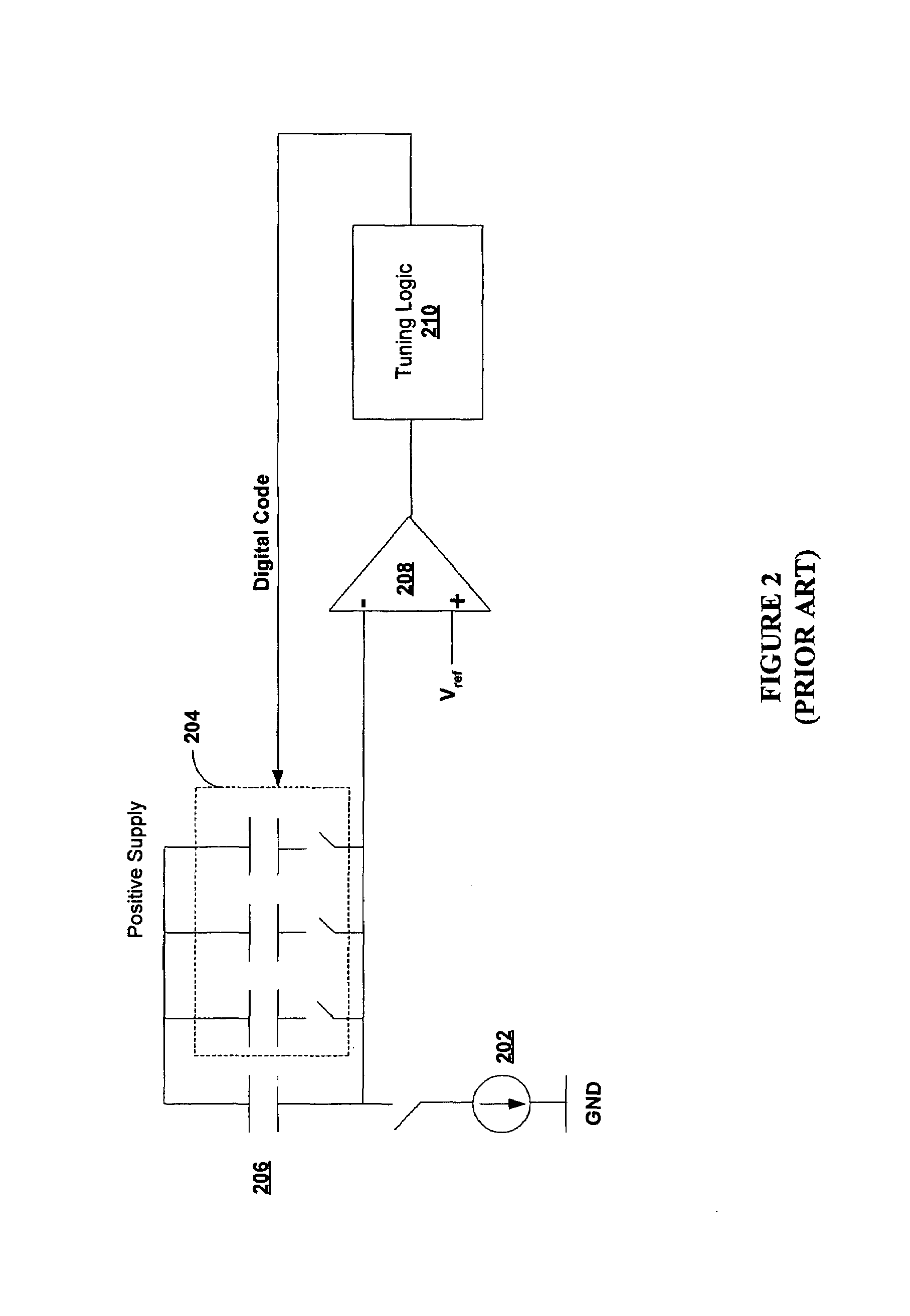Hybrid tuning circuit for continuous-time sigma-delta analog-to-digital converter
a technology of analog-to-digital converter and hybrid tuning circuit, which is applied in the direction of resonant circuit details, code conversion, instruments, etc., can solve the problems of harmonic distortion of the converter, difficult to contain undesirable glitches, electromagnetic interference (emi), etc., and achieve the effect of eliminating inter-symbol interference problems
- Summary
- Abstract
- Description
- Claims
- Application Information
AI Technical Summary
Benefits of technology
Problems solved by technology
Method used
Image
Examples
Embodiment Construction
[0027]Although the present invention has been shown and described with respect to several preferred embodiments thereof, various changes, omissions and additions to the form and detail thereof, may be made therein, without departing from the spirit and scope of the invention.
[0028]The present invention uses a hybrid tuning circuit comprising a digital finite state machine and an analog control circuit to effectively keep the RC product of the continuous time integrator constant across process, temperature, supply and sampling rate variations. Because the present invention's implementation is continuous in nature, the tracking is much more accurate than traditional techniques mentioned before. Moreover, the present invention allows for a wide variation of sampling rate which is not possible in prior arts.
[0029]According to a further aspect of the present invention, a carefully chosen clocking scheme is provided, wherein the scheme eliminates the inter-symbol-interference (ISI) in the...
PUM
 Login to View More
Login to View More Abstract
Description
Claims
Application Information
 Login to View More
Login to View More - R&D
- Intellectual Property
- Life Sciences
- Materials
- Tech Scout
- Unparalleled Data Quality
- Higher Quality Content
- 60% Fewer Hallucinations
Browse by: Latest US Patents, China's latest patents, Technical Efficacy Thesaurus, Application Domain, Technology Topic, Popular Technical Reports.
© 2025 PatSnap. All rights reserved.Legal|Privacy policy|Modern Slavery Act Transparency Statement|Sitemap|About US| Contact US: help@patsnap.com



